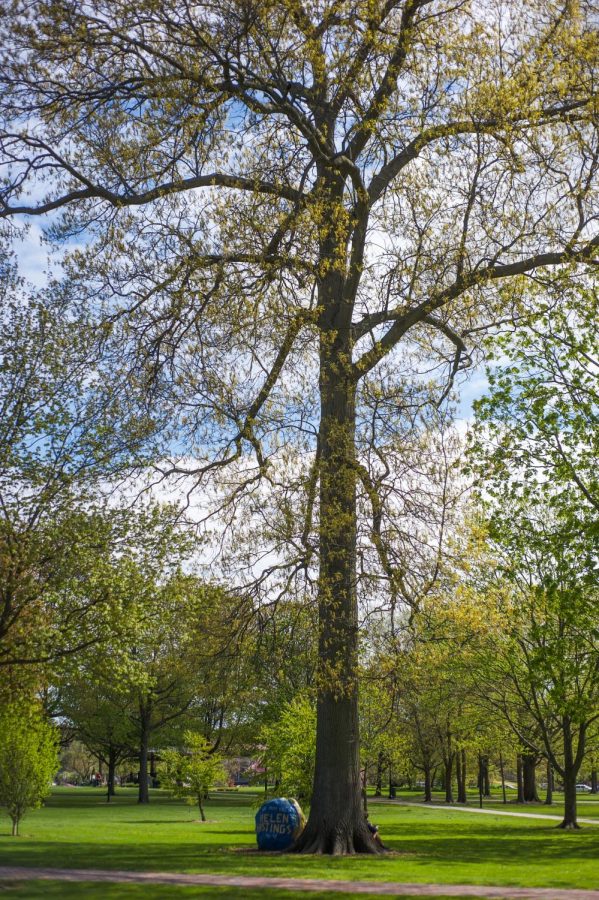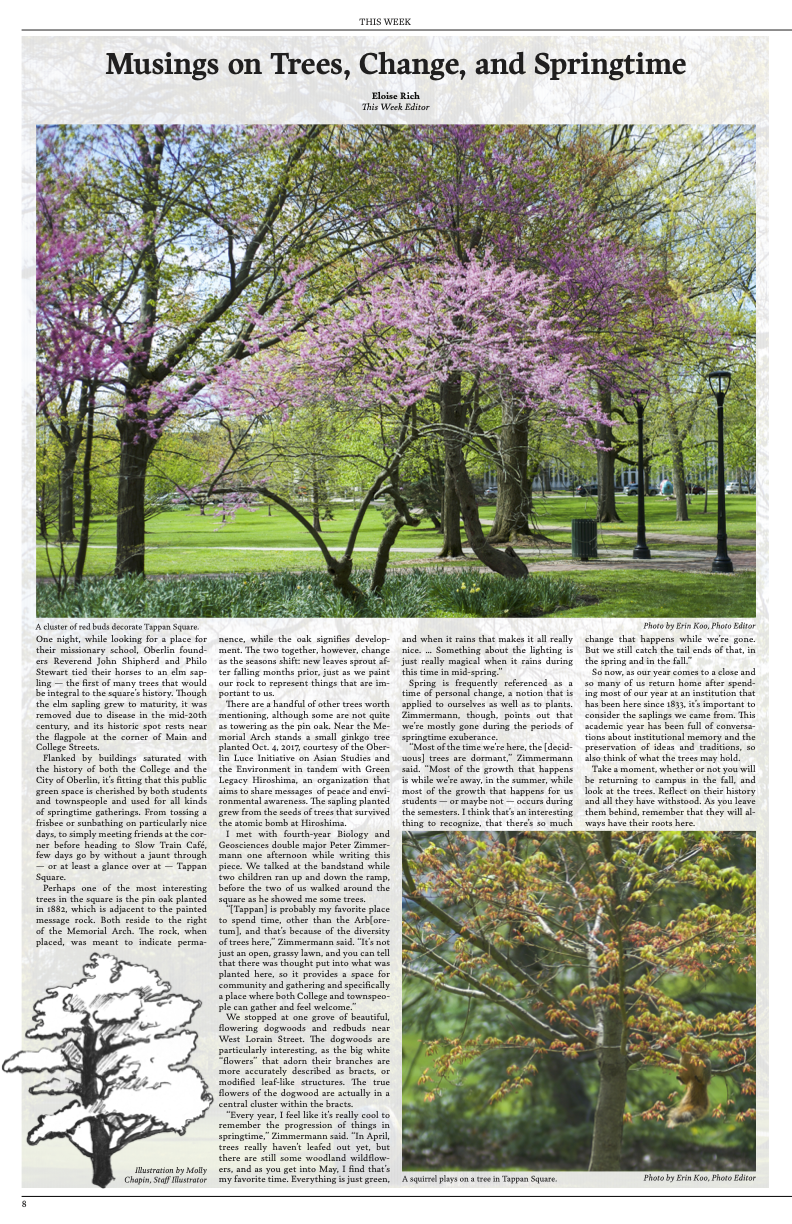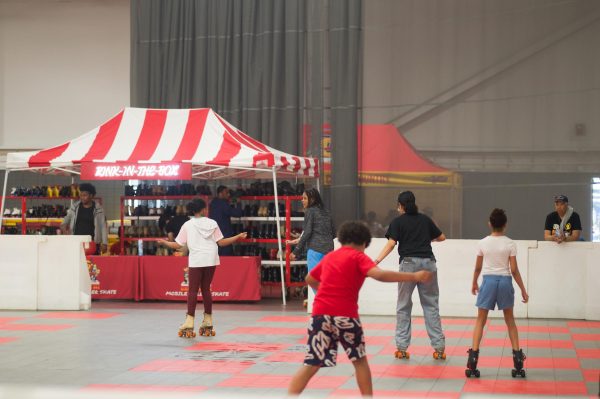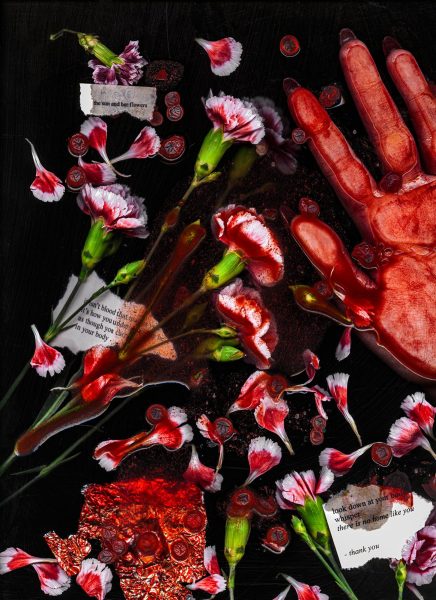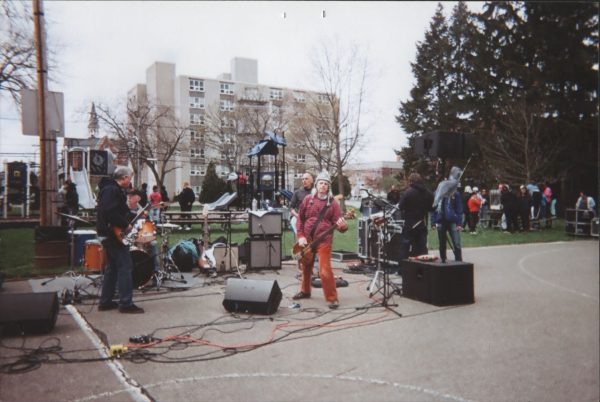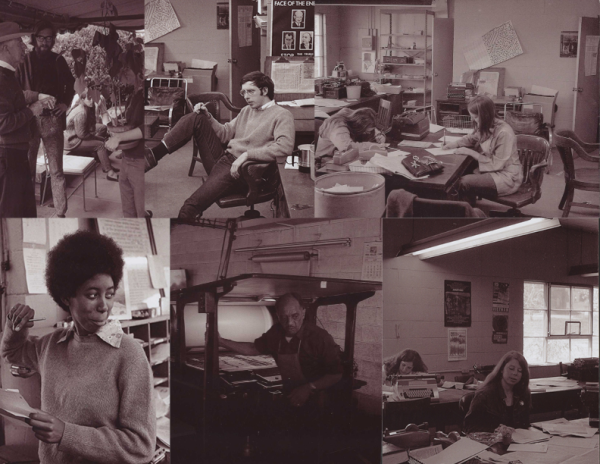Musings on Trees, Change, and Springtime
The pin oak towers next to the painted message rock.
One night, while looking for a place for their missionary school, Oberlin founders Reverend John Shipherd and Philo Stewart tied their horses to an elm sapling — the first of many trees that would be integral to the square’s history. Though the elm sapling grew to maturity, it was removed due to disease in the mid-20th century, and its historic spot rests near the flagpole at the corner of Main and College Streets.
Flanked by buildings saturated with the history of both the College and the City of Oberlin, it’s fitting that this public green space is cherished by both students and townspeople and used for all kinds of springtime gatherings. From tossing a frisbee or sunbathing on particularly nice days, to simply meeting friends at the corner before heading to Slow Train Café, few days go by without a jaunt through — or at least a glance over at — Tappan Square.
Perhaps one of the most interesting trees in the square is the pin oak planted in 1882, which is adjacent to the painted message rock. Both reside to the right of the Memorial Arch. The rock, when placed, was meant to indicate permanence, while the oak signifies development. The two together, however, change as the seasons shift: new leaves sprout after falling months prior, just as we paint our rock to represent things that are important to us.
There are a handful of other trees worth mentioning, although some are not quite as towering as the pin oak. Near the Memorial Arch stands a small ginkgo tree planted Oct. 4, 2017, courtesy of the Oberlin Luce Initiative on Asian Studies and the Environment in tandem with Green Legacy Hiroshima, an organization that aims to share messages of peace and environmental awareness. The sapling planted grew from the seeds of trees that survived the atomic bomb at Hiroshima.
I met with fourth-year Biology and Geosciences double major Peter Zimmermann one afternoon while writing this piece. We talked at the bandstand while two children ran up and down the ramp, before the two of us walked around the square as he showed me some trees.
“[Tappan] is probably my favorite place to spend time, other than the Arb[oretum], and that’s because of the diversity of trees here,” Zimmermann said. “It’s not just an open, grassy lawn, and you can tell that there was thought put into what was planted here, so it provides a space for community and gathering and specifically a place where both College and townspeople can gather and feel welcome.”
We stopped at one grove of beautiful, flowering dogwoods and redbuds near West Lorain Street. The dogwoods are particularly interesting, as the big white “flowers” that adorn their branches are more accurately described as bracts, or modified leaf-like structures. The true flowers of the dogwood are actually in a central cluster within the bracts.
“Every year, I feel like it’s really cool to remember the progression of things in springtime,” Zimmermann said. “In April,
trees really haven’t leafed out yet, but there are still some woodland wildflowers, and as you get into May, I find that’s my favorite time. Everything is just green, and when it rains that makes it all really nice. … Something about the lighting is just really magical when it rains during this time in mid-spring.”
Spring is frequently referenced as a time of personal change, a notion that is applied to ourselves as well as to plants. Zimmermann, though, points out that we’re mostly gone during the periods of springtime exuberance.
“Most of the time we’re here, the [deciduous] trees are dormant,” Zimmermann said. “Most of the growth that happens
is while we’re away, in the summer, while most of the growth that happens for us students — or maybe not — occurs during the semesters. I think that’s an interesting thing to recognize, that there’s so much change that happens while we’re gone. But we still catch the tail ends of that, in the spring and in the fall.”
So now, as our year comes to a close and so many of us return home after spending most of our year at an institution that has been here since 1833, it’s important to consider the saplings we came from. This academic year has been full of conversations about institutional memory and the preservation of ideas and traditions, so also think of what the trees may hold.
Take a moment, whether or not you will be returning to campus in the fall, and look at the trees. Reflect on their history and all they have withstood. As you leave them behind, remember that they will always have their roots here.


